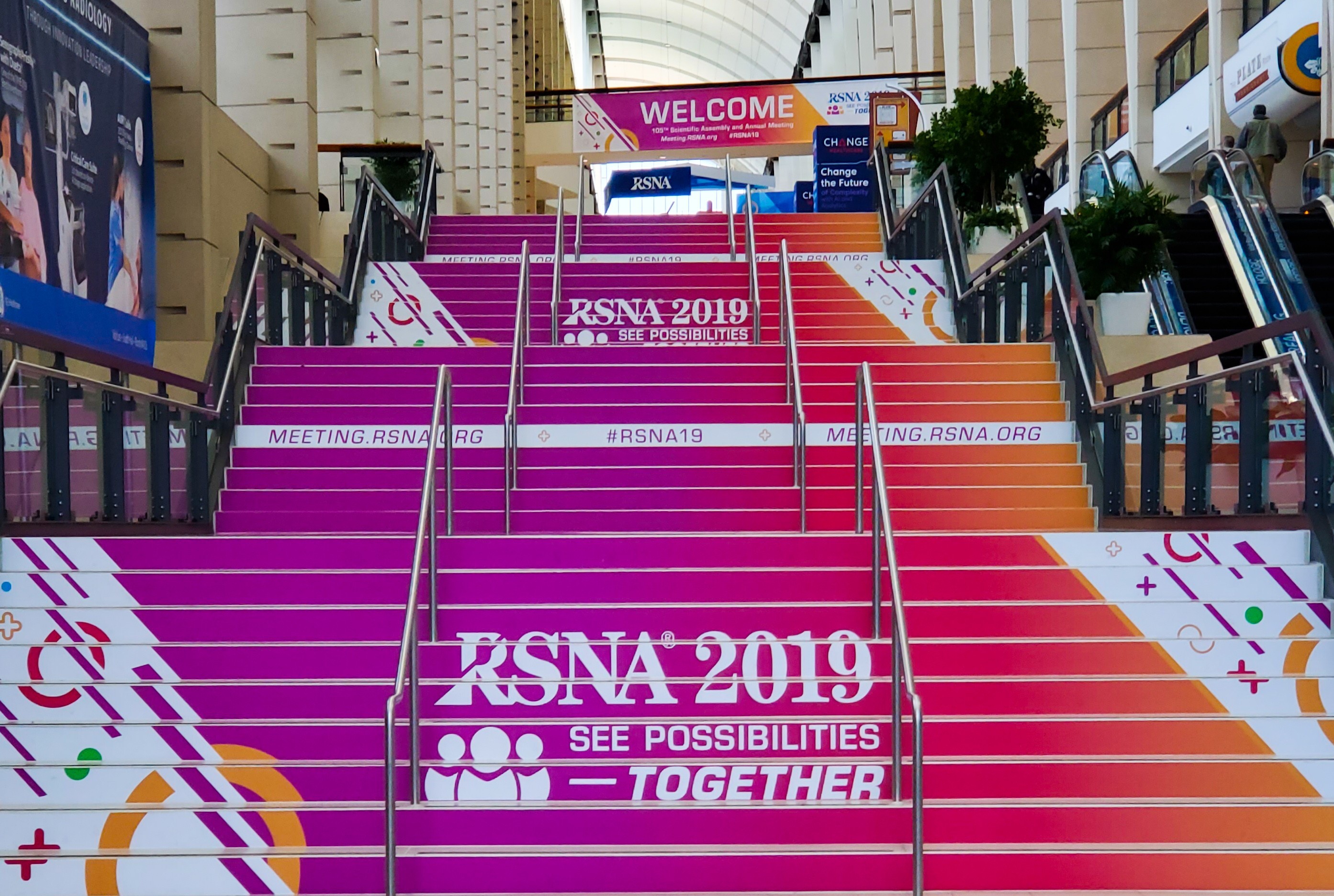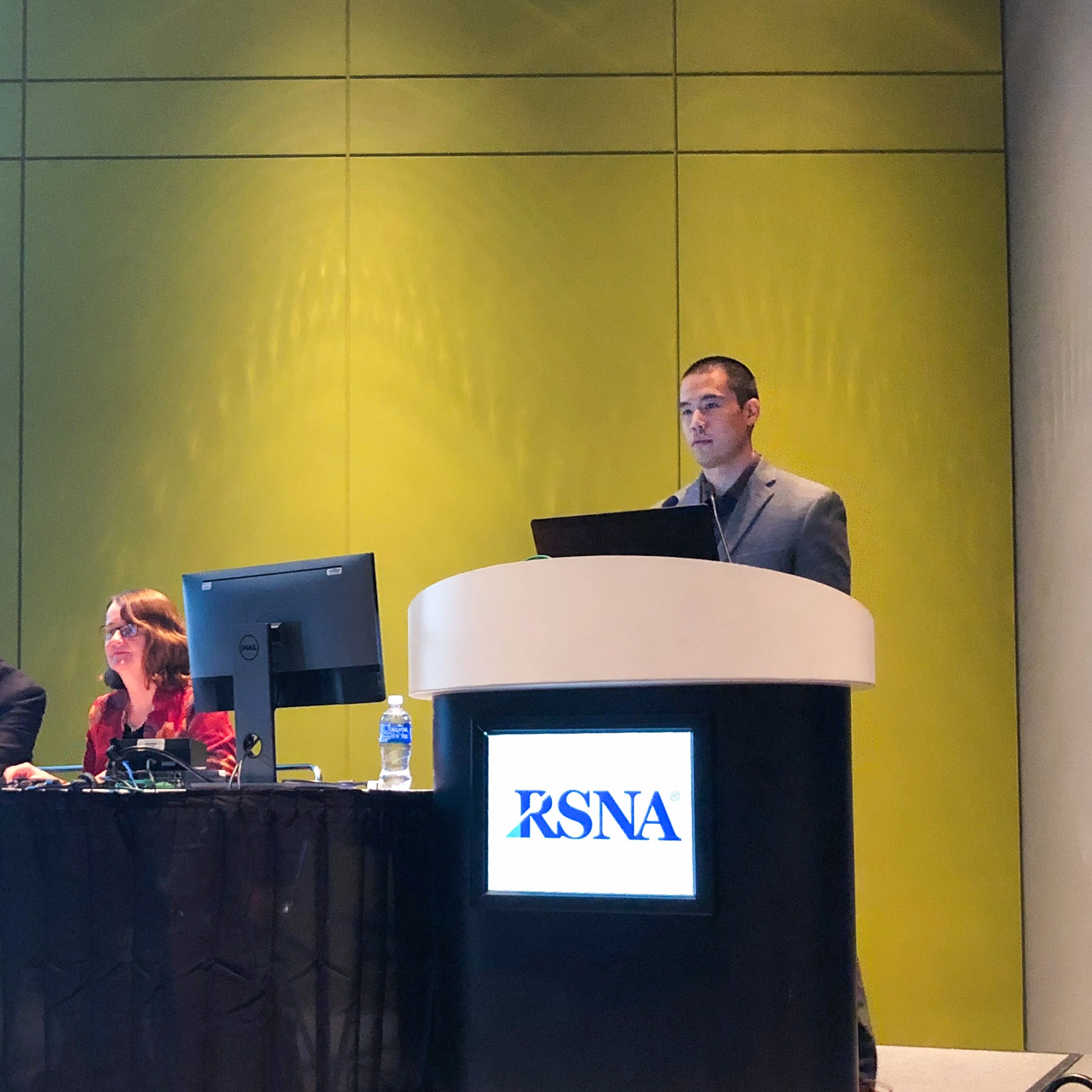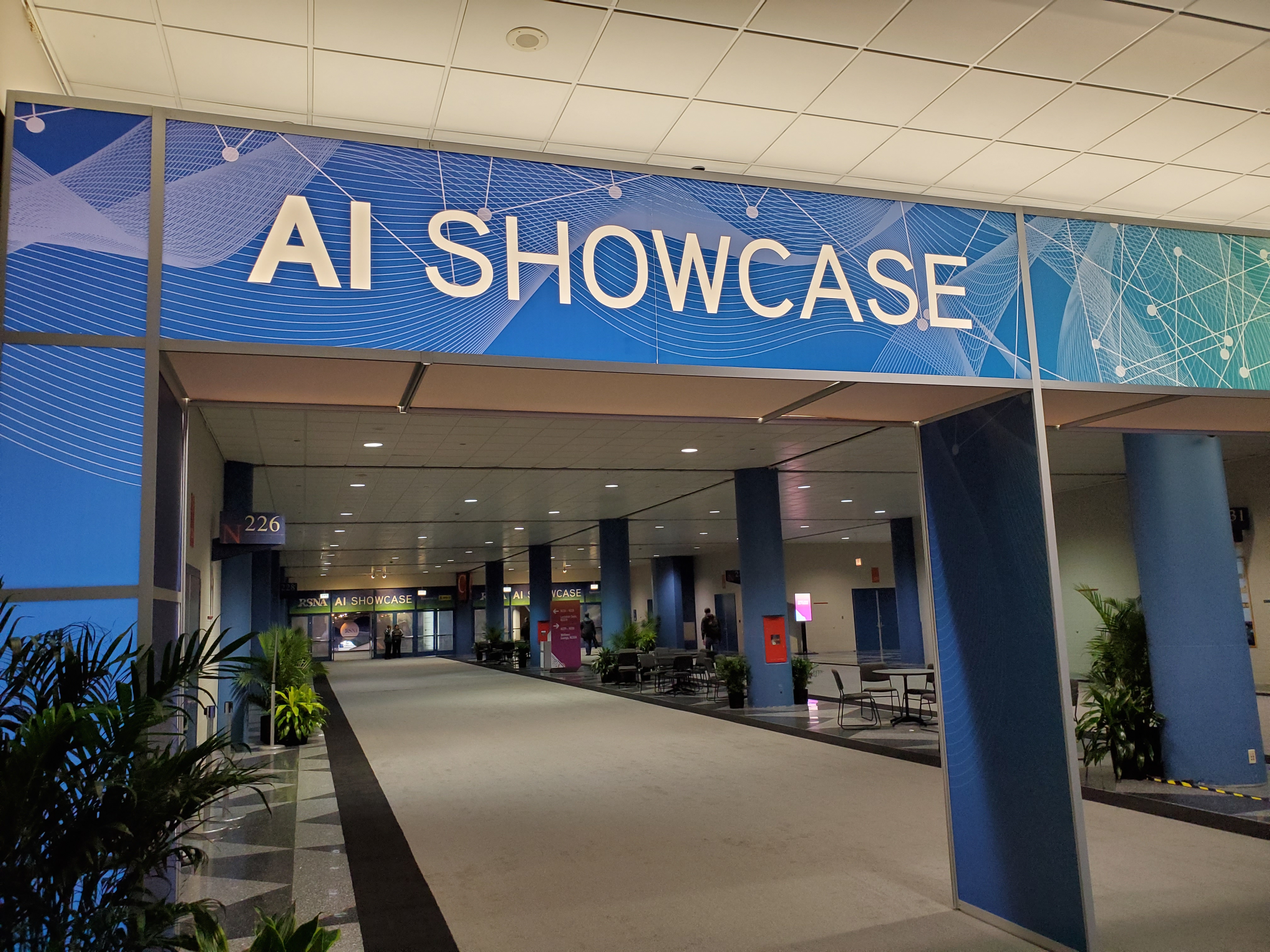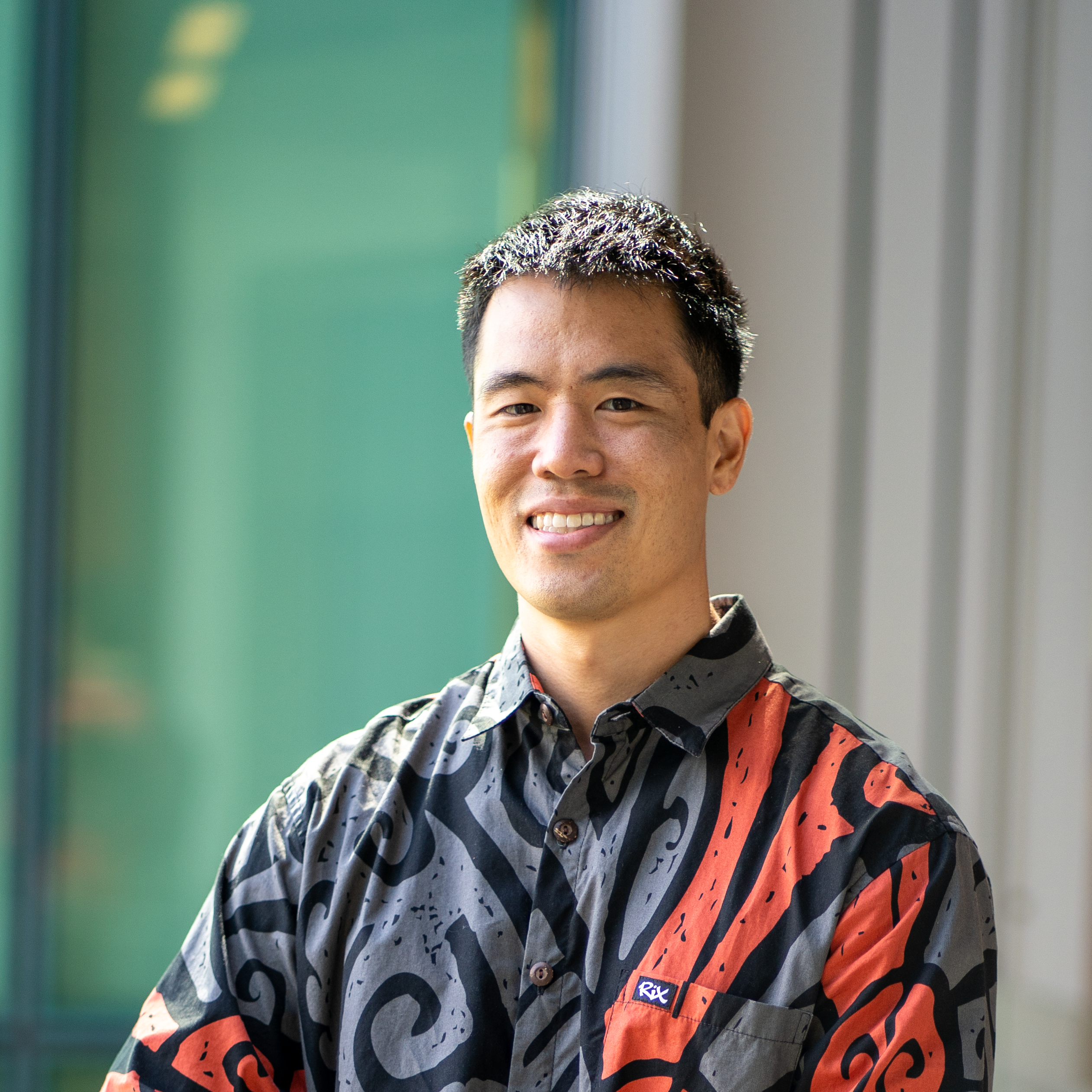Presenting at Radiological Society of North America (RSNA) 2019

After joining John Shepherd and his team at the University of Hawaii Cancer Center in November of 2018, I had begun working on a dual X-ray mammography project known as the 3 Compartment Breast (3CB). The goal of 3CB is to be able to separately view the different tissue components of the breast and possible lesions. These components include lipid, water, and protein. In order to accurately derive the three components, accurate geometrical and thickness measurements of the breast is needed. My work consisted of developing a technique to accurately estimate the breast measurements that were needed for our 3CB algorithm.
Abstracts for the Radiological Society of North America (RSNA) annual conference were due in April and we believed that this would be a good opportunity to present my work and for me to gain exposure to the field of radiology. My abstract was accepted and I was awarded an oral presentation in the beast imaging physics session held on Monday, December 02, 2019. After being notified that I had been awarded an oral for RSNA 2019, I applied for the University of Hawaii Cancer Center’s Trainee Travel grant. I was fortunate to receive the maximum funding for the award. I am appreciative and grateful to the University of Hawaii Cancer Center for the award because it has allowed me to gain valuable experience.
</div> The trip to RSNA consisted of a bunch of first for me. It was the first time that I had an abstract accepted, it was my first, first authored work, it was the first time attending a conference of this scale and size, it was the first time speaking in front of an audience of that size, and it was my first time to Chicago. I owe it to Dr. Shepherd and the rest of the team for helping me with the practicing of my talk and helping me practice fielding potentially hard questions. I went into my talk confident and the presentation went well. I had receive a couple questions at the end of my presentation. One question was about my methodology and its application to real patients and the other questions dealt with the scope and future direction of my work. The questions were reasonable, not difficult, and I was able to provide clear and concise answers. My talk was one of two talks with in our session that consisted of machine learning or the use of artificial intelligence (AI). Most of the talks were geared more towards clinicians and techs who use and operate digital breast tomosynthesis imaging systems. Listen to these talks were valuable because it offered a new perspective on work that was similar or with in the scope of my project. Speaking in front of an audience of that size for the first time turned out to be fun. I have grown from this experience and am excited and motivated to get back to the research so that I can have another opportunity like this again.

Fielding questions. I normally smile more.
I spent time attending other speaker sessions and reviewing the poster presentations. Since the majority of my focus for my dissertation and research is centered around breast imaging and the use of machine learning and AI, my attendance was focused around those topics. I got to learn about the work and advanced that were being made in the field of radiology as a whole, as well as, in the specific fields of breast imaging and AI. There were also several workshops however, since this conference is geared heavily towards clinicians, the AI workshops were meant to be less technical. In any case, they were informative since they were specific to the field of radiology.

Conference hall dedicated to AI
To my delightful surprise, the rest of my time at RSNA was spent in discussion with vendors, clinicians, and existing and potential research collaborators. I was fortunate to be included in many conversations that took place between clinicians, companies, and us, the researchers. Being a part of the discourse was a unique and valuable experience in that we get to see the impact of our work and what work still needs to be done. When meeting the various companies, we get to learn about the latest and greatest technologies that are on the market or in development. We had many discussions with companies on how we can initiate or further our collaborations using their products and/or helping to develop new ones. All companies and products that were at RSNA are the extension of some research work done by researchers just like us and it is eye opening to see one potential end product of our work. Meetings with clinicians help us to understand how our research relates to the level of patient care. It also allows us to learn about the disparities within healthcare that our efforts should be focused on addressing. It is common that some research efforts do not translate when moving from the bench top to the bedside and these conversations with clinicians help us to identify when this is happening so that we can work towards a solution. Lastly, we also met with other fellow research team to discuss our current work and the potential for collaboration. These conversations were valuable and they allowed me to see view the healthcare, specifically radiology, field from many perspectives that I am not sure I would have seen by staying on island nor in the lab.
As a student in the Molecular Bioscience and Bioengineering department at the University of Hawaii at Manoa and as a researcher who represents the University of Hawaii Cancer Center, Shepherd Research Lab, and the AI Precision Health Institute, we strive to build translational AI models targeted at helping the people of Hawaii. My trip to RSNA and the trainee travel grant has allowed me to gain valuable knowledge and experience that has oriented me in a good position to accomplish my goals.
MORE TO COME, STAY TUNED!
